What public lands can I hunt on?
America’s public lands offer unparalleled opportunities for hunting, allowing families the chance to pass down the nation’s rich hunting heritage. It was this hunting tradition that was the primary driver behind the creation of the National Wildlife Refuge System, which has set aside millions of acres of land for the conservation of all wildlife, while providing wildlife-dependent recreation like hunting and wildlife watching.Today, there are 76 areas managed by the National Park Service, 336 national wildlife refuges and 36 wetland management districts managed by the U.S. Fish and Wildlife Service, and over 220 million acres of BLM-managed public lands -- in addition to most Bureau of Reclamation lands -- that allow hunting in accordance with federal and state regulations and laws.
To ensure you are hunting in appropriate areas, please contact your local public lands management office.
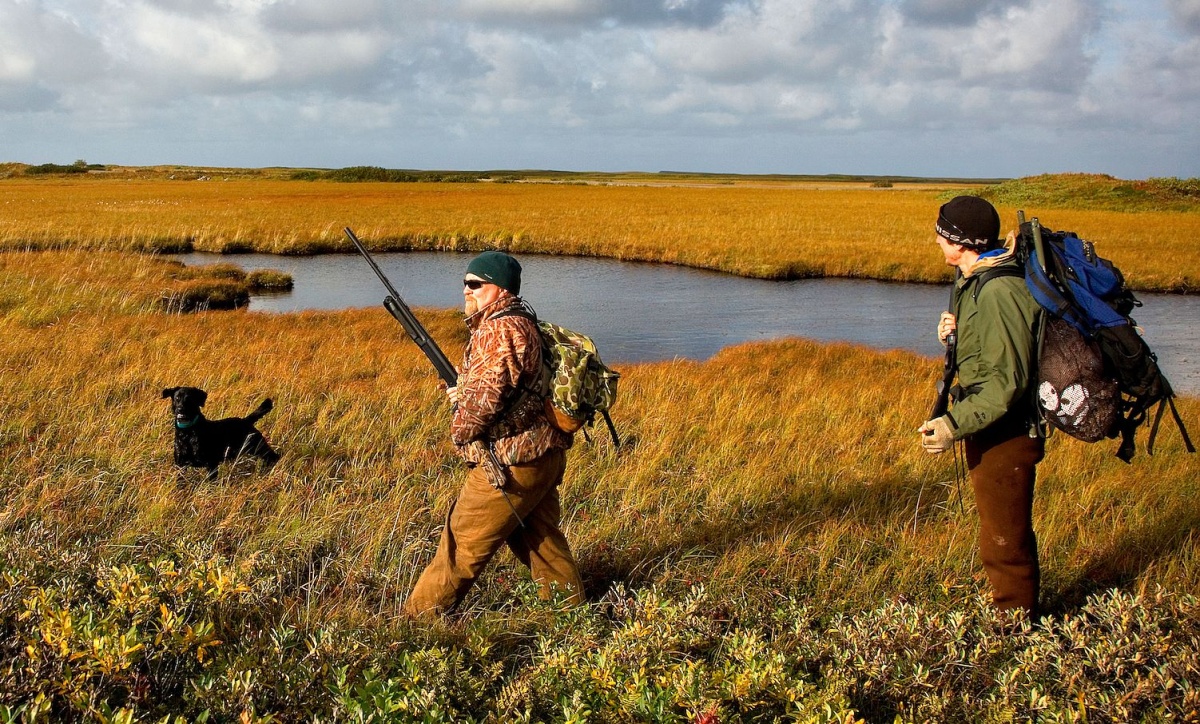 Waterfowl hunters at Izembek National Wildlife Refuge in Alaska. Photo by Ryan Hagerty, U.S. Fish and Wildlife Service.
Waterfowl hunters at Izembek National Wildlife Refuge in Alaska. Photo by Ryan Hagerty, U.S. Fish and Wildlife Service.How do hunters contribute to wildlife and habitat conservation?
Hunters are a driving force behind funding many of our nation’s conservation efforts. After the extinction of the passenger pigeon and the near elimination of the bison and many migratory bird species in the early 1900s, Americans realized the impacts humans could have on wildlife. To ensure that there would be animals to hunt in the future, hunters began to support programs that helped maintain species populations and protected habitat for wildlife.One of the oldest programs, the Federal Migratory Bird Hunting and Conservation Stamp (commonly known as the Duck Stamp and required as a license for migratory bird hunting) was created in 1934 after prompting from waterfowl hunters to protect wetlands that are vital to migratory waterfowl. Since that first stamp, sales have raised more than $950 million, helping to protect or restore nearly 6 million acres of habitat for birds and other wildlife.
That’s not the only conservation program hunting pays for. Three years after the Duck Stamp, the Federal Aid in Wildlife Restoration Act -- often called the Pittman-Robertson Act -- was passed. This directs revenue from an excise tax on firearms and ammunition to state wildlife agencies to be used for wildlife conservation projects, hunter education and outdoor recreation access.
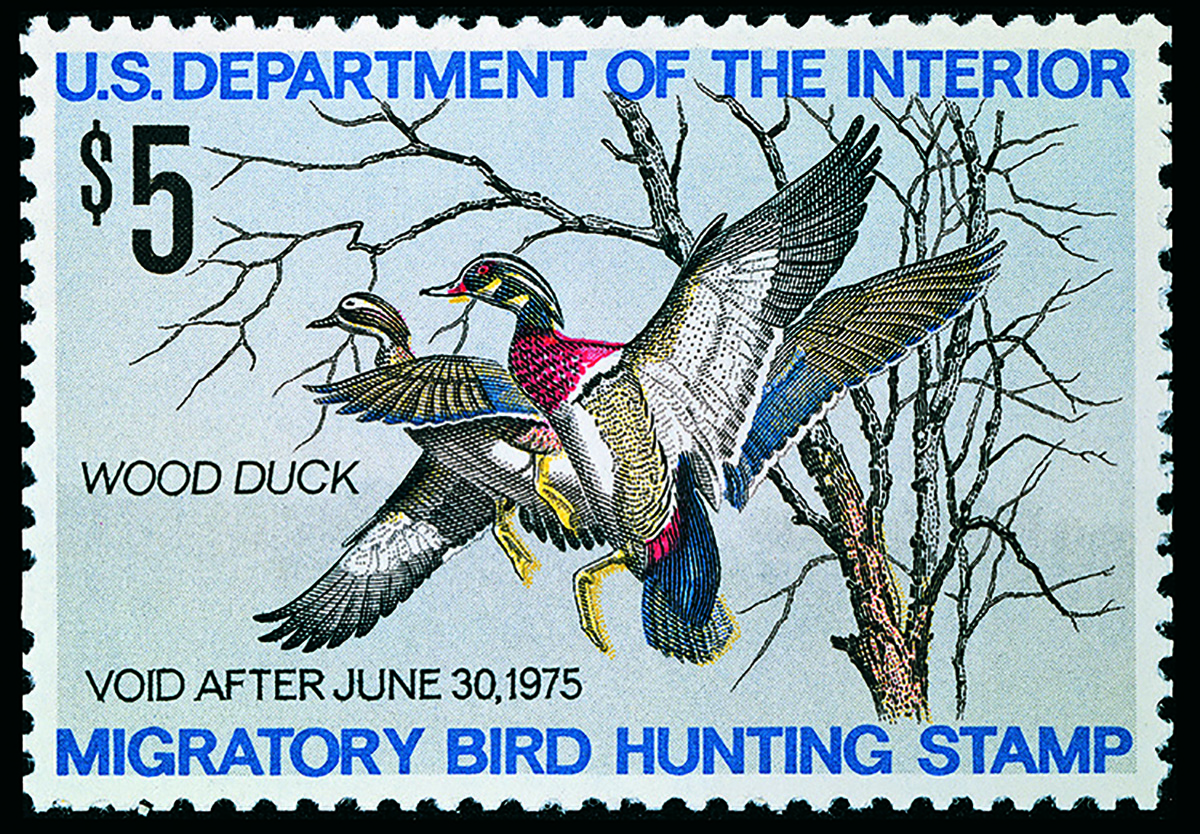 The Duck Stamp for 1974-1975 was an oil painting of wood ducks by David A. Maass of Orono, Minnesota. Image by U.S. Fish and Wildlife Service.
The Duck Stamp for 1974-1975 was an oil painting of wood ducks by David A. Maass of Orono, Minnesota. Image by U.S. Fish and Wildlife Service.What types of animals can I hunt on America’s public lands?
Where allowed on America’s public lands, you can be assured of a quality hunt. From deer and waterfowl to turkey and feral hogs, there’s a range of permitted species to hunt on public lands. For those looking for a challenging big game hunt, public lands in Alaska are the place for you.The harvesting of wildlife on public lands is carefully regulated to ensure an equilibrium between wildlife and their habitats. Each location -- whether it’s a national preserve, wildlife refuge or BLM-managed land -- decides the species that you can hunt, and when and exactly where you can hunt them. These decisions factor in species’ populations, economic feasibility, habitat feasibility, public safety and demand.
Find the perfect hunt for you on national wildlife refuges, BLM-managed public lands or a national preserve.
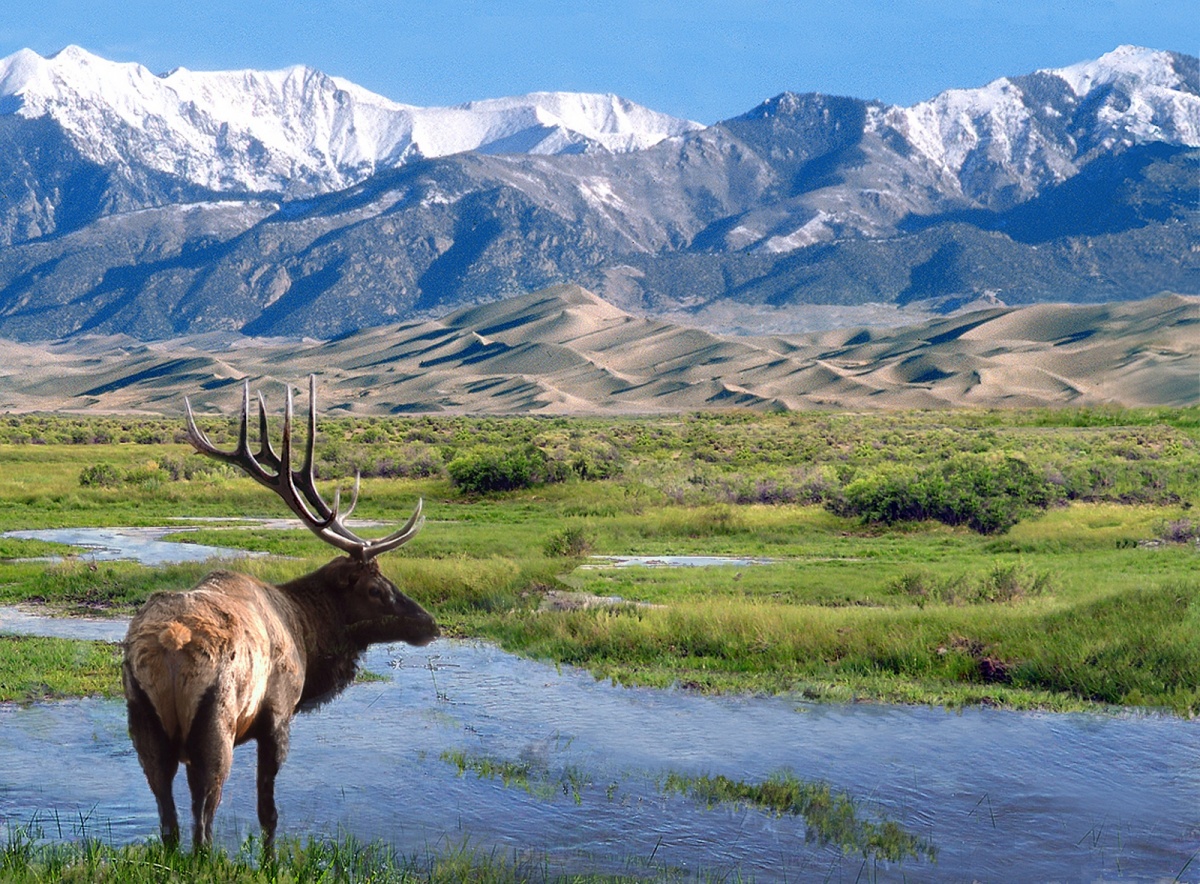 A bull elk in Great Sand Dunes National Preserve. Hunting is allowed in the preserve, but not the national park area. Photo by National Park Service.
A bull elk in Great Sand Dunes National Preserve. Hunting is allowed in the preserve, but not the national park area. Photo by National Park Service.What should I know before hunting on public lands?
Before you set off on a hunting adventure on public lands, make sure you are prepared. Weather and conditions may change quickly, so pack accordingly. Pick up maps, and let others know where you will be, when you will be back and develop an emergency plan just in case.While hunting, know your surroundings -- be on the lookout for other people and potential risks. Always be sure of your target and what is beyond. Make sure your equipment is in proper working condition to decrease risk of injury to yourself or others, or accidentally starting a fire on public lands.
Hunting safety classes are highly recommended and required in some states. Treat every gun as if it is loaded, and never point the muzzle of a firearm at anything you do not intend to shoot. Keep your finger off the trigger and out of the trigger guard until your sights are on the target and you are ready to shoot. Protect yourself by wearing proper hearing protection and safety glasses.
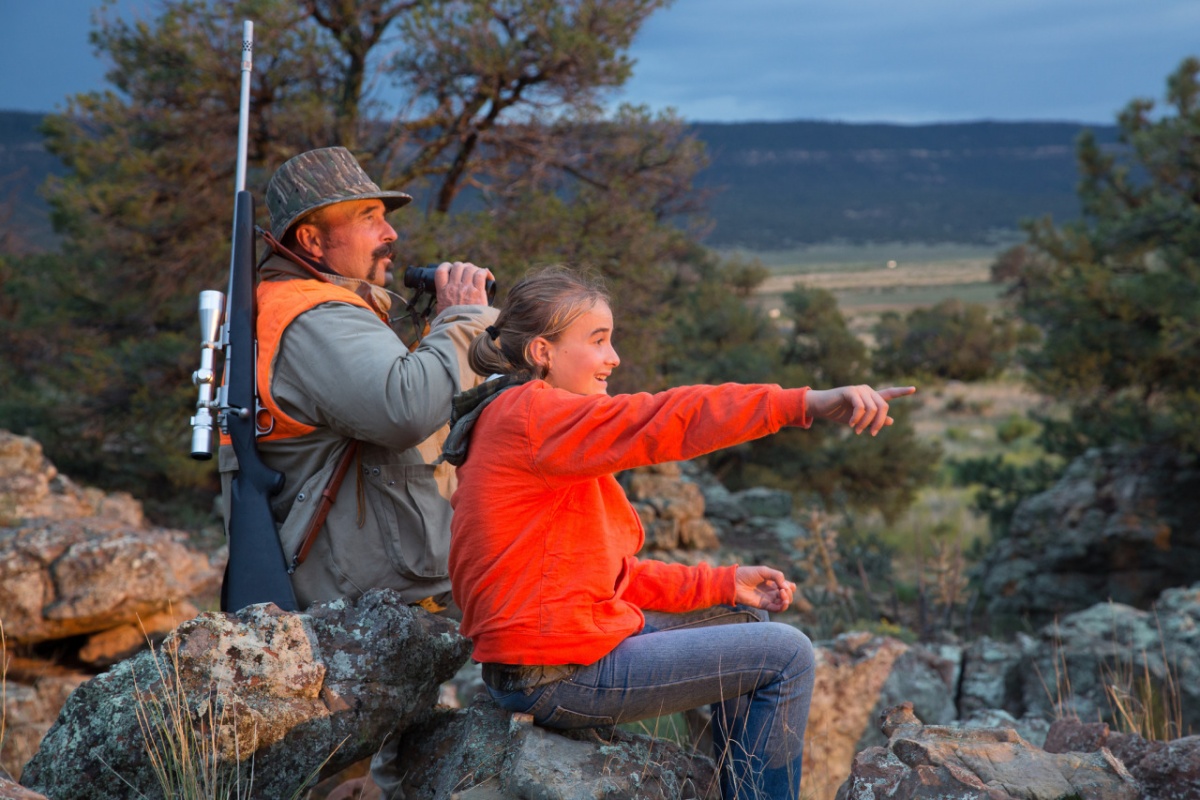 Hunting traditions and good safety practices are passed down from generation to generation. A father and daughter scope their route at El Malpais National Conservation Area in New Mexico. Photo by Bob Wick, Bureau of Land Management.
Hunting traditions and good safety practices are passed down from generation to generation. A father and daughter scope their route at El Malpais National Conservation Area in New Mexico. Photo by Bob Wick, Bureau of Land Management.Do I need a license to hunt on public lands?
All hunters on public lands must have the required state license(s). That’s because states are responsible for managing wildlife within their borders for the trust and benefit of their residents, even if the hunting occurs on federal lands.If you hunt migratory waterfowl and you are 16 years of age or older, you need to purchase and carry a current Duck Stamp or E-Stamp. Duck Stamps are valid from July 1 through the following June 30.
Some public lands managed by Interior also require their own permits and/or user fees. You may also be need to take a hunter education course. Of course, it’s always essential to practice firearm safety and be equipped with proper gear. Check with the specific location before heading out for a hunt. Learn more about hunting on public lands.
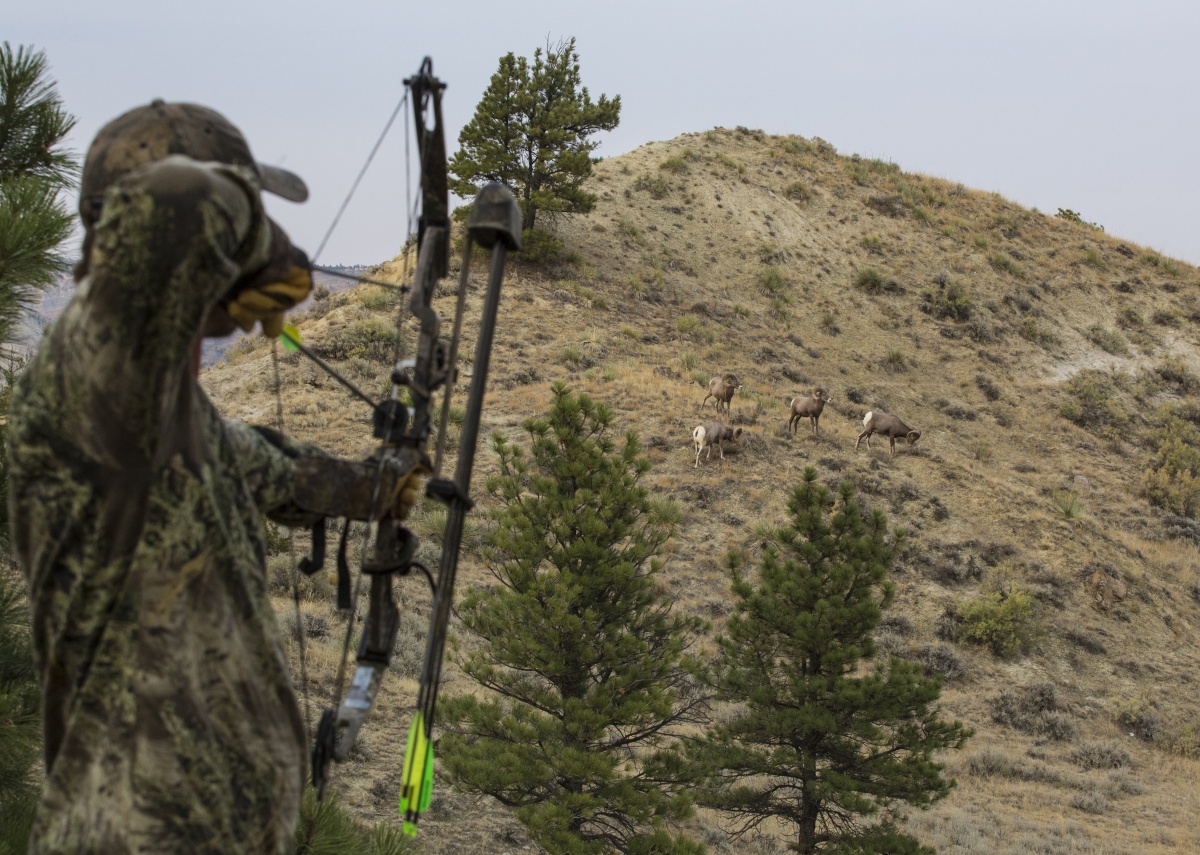 A bow hunter aims at bighorn sheep at Upper Missouri River Breaks National Monument in Montana. Photo by Bob Wick, Bureau of Land Management.
A bow hunter aims at bighorn sheep at Upper Missouri River Breaks National Monument in Montana. Photo by Bob Wick, Bureau of Land Management.How does hunting help with wildlife management?
Aldo Leopold, a hunter and conservationist, wrote the book on modern-day wildlife management. The highly successful North American Wildlife Conservation Model is founded on our nation’s great hunting and fishing heritage. Some of the main tenets of wildlife stewardship include using science to develop wildlife policy, only killing wildlife for legitimate purposes such as food, and upholding the ideal of hunting as inexpensive and accessible to all -- preventing the U.S. from becoming like England where only a privileged class had the opportunity to hunt.Incorporating those guiding principles, hunting on public lands does not pose a threat to the wildlife populations and helps with sound management of wildlife. Public lands in much of America are surrounded by development or human activity in various forms, and as such, need to be carefully managed. At many sites, humans are the only remaining predator for species such as deer, and reintroducing natural predators is not feasible given the proximity to people. This makes hunting a particularly valuable management tool for maintaining balanced wildlife populations. For example if some of the deer are not harvested, they destroy habitat for themselves and other animals, and die from starvation or disease. Not only does this help manage wildlife populations, it also provides food for many Americans.
Alaska is unique among states not only in the extent to which its inhabitants live off the land but because of hunting and fishing directives set by the Federal Subsistence Management Program. Alaska is the only state where the subsistence use of fish and game is given the highest-priority for consumptive use. In our nation’s largest state, there are only 13 state roads connecting urban centers and thousands of acres of uninhabited lands with no roads at all. Driving to the supermarket to buy something for dinner is out of the question, so subsistence harvesting of food and materials becomes an activity of paramount importance in Alaska.
 Interior Secretary Ryan Zinke wishes you good hunting. Photo courtesy of Scott Wilson.Whether you are a first-time hunter or a seasoned sportsman or woman, your public lands are some of the best places in the country for a hunt.
Interior Secretary Ryan Zinke wishes you good hunting. Photo courtesy of Scott Wilson.Whether you are a first-time hunter or a seasoned sportsman or woman, your public lands are some of the best places in the country for a hunt.Source: DOI








